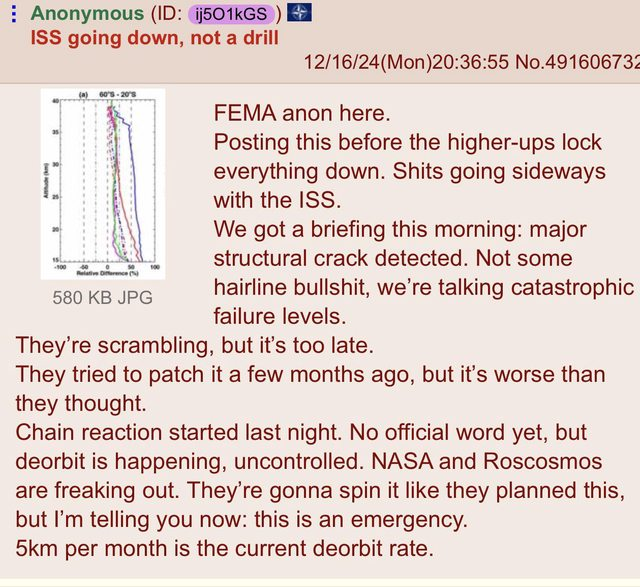this post was submitted on 12 Feb 2025
137 points (90.1% liked)
Greentext
5217 readers
705 users here now
This is a place to share greentexts and witness the confounding life of Anon. If you're new to the Greentext community, think of it as a sort of zoo with Anon as the main attraction.
Be warned:
- Anon is often crazy.
- Anon is often depressed.
- Anon frequently shares thoughts that are immature, offensive, or incomprehensible.
If you find yourself getting angry (or god forbid, agreeing) with something Anon has said, you might be doing it wrong.
founded 1 year ago
MODERATORS
you are viewing a single comment's thread
view the rest of the comments
view the rest of the comments

A structural crack wouldn't necessarily be in the hull of the habitat modules. The ISS has a big frame (the Integrated Truss Structure) which supports the solar arrays, power distribution and heat radiators. If the frame is damaged, firing the engines to maintain orbit might be impossible.
And most supply missions give it a boost before leaving as well. Also, the ISS can "glide" by turning it's narrow end forward, getting less drag from the atmosphere and reduce the decay rate at the cost of power generation
Yup, but boosting and turning would both be things you wouldn't want to do with a weakened frame.
is it?
My autocorrect vastly prefers "it's" to "its", regardless of grammer.